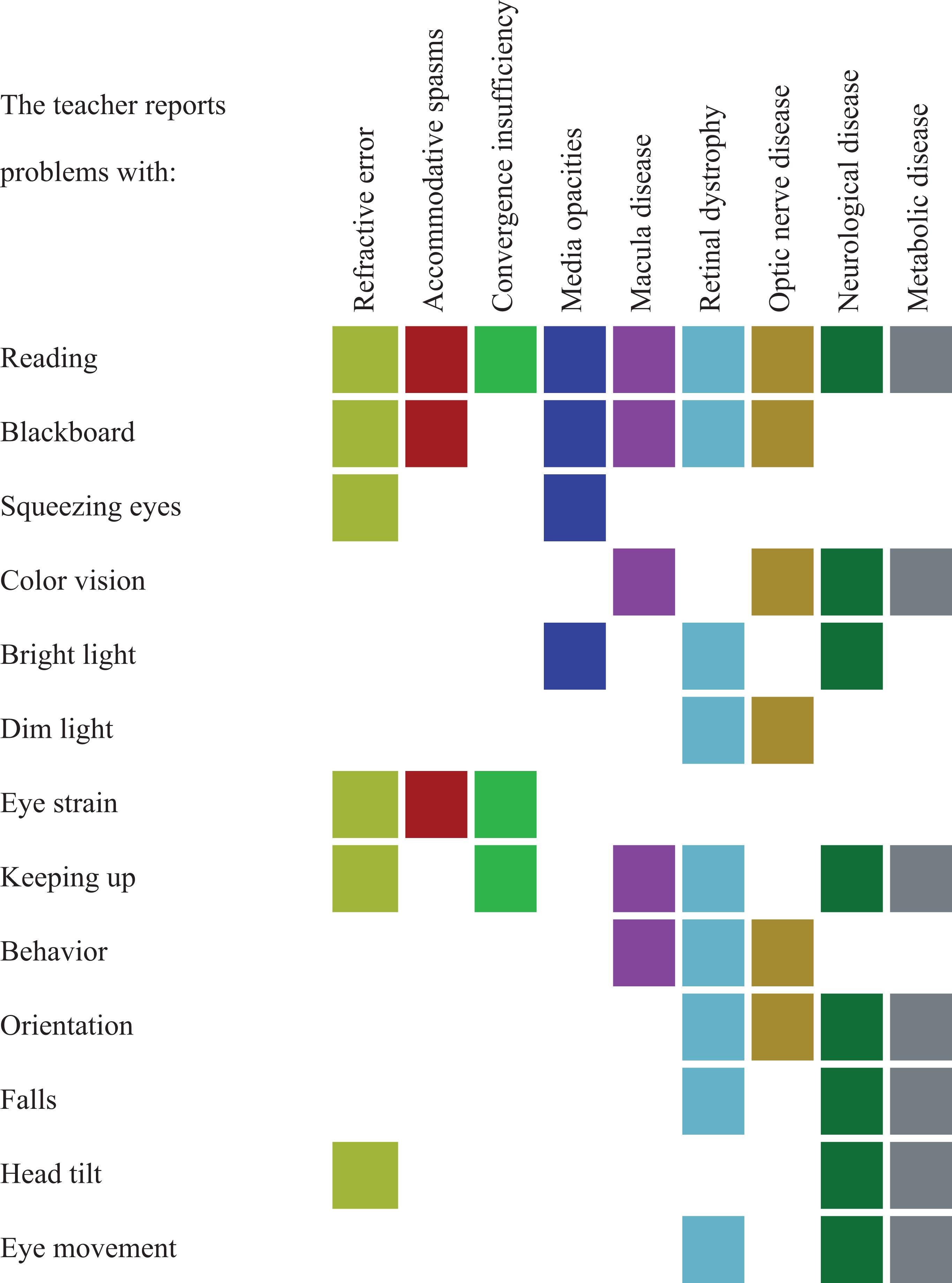Physical Address
304 North Cardinal St.
Dorchester Center, MA 02124
When the teacher contacts parents with a suspicion that their child has visual problems, two scenarios occur: either the parents get worried and embarrassed, or they deny the problem as many parents think that they know best. In either case, the parents have not been aware of any such problems. This may be because the child's visual disability has been constant and non-progressive thoughout the whole life, and the child who never had normal vision did not complain. The use of electronic devices such as tablets and smartphones can easily mask and delay detection of a visual problem as children may use these to compensate very effectively – to enlarge text, take pictures, and enlarge them as well.
The teacher may notice problems with reading (near work), looking at the blackboard (distance vision), problems with color pictures in textbooks, reports of strange color combinations, or peculiar behavior in class. The child may miss what is going on, appear uninvolved, or may need extra time to keep up with the class. There may be problems in the playground: the child doesn't want to play, gets tired, often falls, is light-shy, or has an abnormal head posture. Other symptoms might be squeezing the eyes or complaining of headache. These difficulties can be due to many different diseases/problems, any of which may lead to a visit to the ophthalmologist to rule out any eye disease
Fig. 98.1 describes the signs and symptoms that might arise from various ocular abnormalities, and a combination of these might focus the investigation towards the right diagnosis.

Specific questions are necessary because parents may not associate the visual problems with a change in behavior. Has the child's situation been longstanding or has a change occurred with higher demands? How does the child use a tablet or smartphone – distance and precision. Does the child like to play where it is dark? Is he/she comfortable walking alone or do they always want to hold someone's hand? Has his/her behavior suddenly changed? Aggression or passivity can be symptoms of progressive visual loss. Any other systemic symptom must be noted. It is sometimes helpful to talk with the child without the parents present. Children may only distinguish blurred vision (de-focus) from reduced vision when they are older.
Blurred vision implies an optical problem. A complaint of decreased vision after strenuous exercise or after warm baths suggests Uhthoff's sign of demyelinating disease. Check the family history: an affected uncle in the mother's family may indicate an X-linked disease; likewise, consanguinity may suggest a recessively-inherited disease. Finally, it is important to ask about trauma and any drug history to determine if the child is taking a medication that might influence the vision or the visual field, e.g. vigabatrin.
Observe the child entering the clinic: are there difficulties; is the child afraid or curious; and can the child hear? Children who have attended clinics throughout childhood are often afraid and shy with professionals: it is important to make the child feel safe so he or she cooperates with the visit.
Measure the visual acuity; an accurate refraction is a vital part of the examination of a child with reduced vision. The media should be examined before and after the pupils are dilated, either with a slit-lamp, ophthalmoscope, or retinoscope. Direct ophthalmoscopy is preferable for fundus details to detect subtle changes in the retinal nerve fiber layer and fovea. Indirect ophthalmoscopy provides an overall view of the retina and its periphery; problems such as bull's eye maculopathy, less obvious at high magnification, may become apparent with the indirect ophthalmoscope.
The optic nerve is assessed by its appearance but also by testing pupillary responses, contrast sensitivity, color vision, and visual fields. Color vision and pupillary responses are often normal in retinal diseases with markedly reduced visual acuity, whereas they can be abnormal even in mild optic nerve disease.
It is important to inquire about other symptoms, including hearing problems, in every child with visual loss. Children with concentration deficits must be examined by a neurologist to exclude a seizure disorder, autism, or attention disorders. Neurological examination should be considered in children with reduced vision since eye problems have many systemic associations.
Electrophysiology such as electroretinography, visual evoked potentials, and electro-oculography, as well as ultrasound and optical coherence tomography, can be very useful supplements. Magnetic resonance imaging (MRI) may be necessary if there is any suggestion of intracranial pathology.
Become a Clinical Tree membership for Full access and enjoy Unlimited articles
If you are a member. Log in here